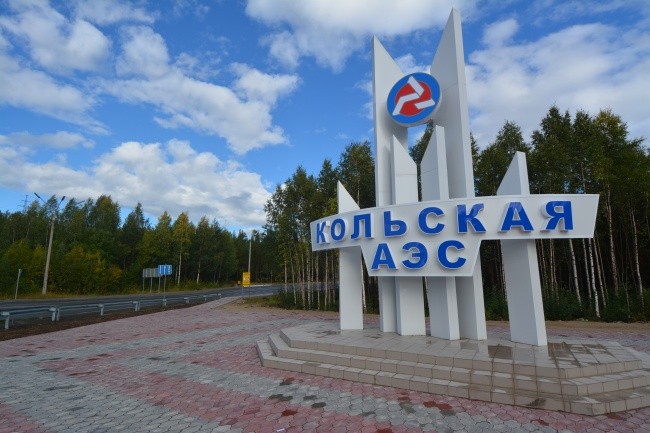The No 3 reactor at Russia’s Kola Nuclear Power Plant has received a renewed license to operate until December 2026, adding more time to a 5-year operational extension it was granted in 2011, worrying nuclear experts.
The No 3 reactor at Russia’s Kola Nuclear Power Plant has received a renewed license to operate until December 2026, adding more time to a 5-year operational extension it was granted in 2011, worrying nuclear experts.
Russia’s state nuclear corporation Rosatom reported on its website that the Russian Federal Service for Environmental, Technological and Nuclear Oversight, or Rostekhnadzor, granted the extension to the reactor – which was widely expected.
Its previous extension ran out on February 7, Rosatom said in its release. It added that the extended run time for Kola’s No. 3 reactor was justified by more than 100 safety upgrades it received at a price tag of 1.5 billion rubles (€16.74 million).
 An Orthodox priest blesses the control room of the Kola Nuclear Power Plant. (Photo: Bellona Archive)
An Orthodox priest blesses the control room of the Kola Nuclear Power Plant. (Photo: Bellona Archive)
The reactor went into service in 1981.
Its extension comes in the wake of a shutdown at the Kola plant’s reactor No 4 just last week, which the nuclear station said was the result of “deteriorating insulation of a power cable in the course of conducting scheduled tests on an auxiliary systems pump.”
That reactor is currently operating on a whopping 25-year extension granted in 2014. The safety ramifications of the cable failure are under investigation, but unlikely to be disclosed to the general public.
Extended run times could bring surprises
The newest reactor extension at the No. 3 reactor piqued the concern of Nils Bøhmer, Bellona’s executive director and nuclear physicist.
“Recent development with Kola’s reactor No 4, mean we might discover a deteriorated cable or something else at reactor No 3 sooner or later as well,” he said in an interview. “The ages these reactors are reaching with their extensions can easily mean more problems will come to light.”
All of the Kola nuclear plant’s reactors are running on extensions granted by Rostekhnadzor with the aim of using them for as long as 60 years.
The plant’s No 1 and 2 VVER 440/230 type reactors went online in 1973 and 1974, respectively. Their shutdown dates are now expected in 2018 and 2019.
 Inside reactor no 1 at the Kola Nuclear Power Plant. (Photo: Wikipedia)
Inside reactor no 1 at the Kola Nuclear Power Plant. (Photo: Wikipedia)
The No 4 reactor – which, like No 4 is a VVER 440/213 model – went into service in 1984, the Independent Barents Observer news portal said. It will now leave service in 2039,
Disquieting power boosting experiments
One caution from reactor No 4’s emergency shutdown that should be taken into account after the granting the No 3 reactor’s extension, said Bøhmer, is experimentation with boosting reactor power output.
Since 2012, Kola’s No 4 reactor has been the subject of an experiement which periodically boosts its power output from 104 up to 107 percent its nominal capacity.
According to the Kola nuclear plant, reactor No 3 will also undergo such experimental power boosts as well, once a government environmental impact study for the tests is approved.
”It’s a flaw of the Russian system that power boosts have to clear government environmental impact studies and go through public hearings, while reactor lifespan extensions don’t,” said Bøhmer.
Alexander Nikitin, chairman of the Environmental Rights Center Bellona, has said running reactors above nominal power is an international practice, not just a Russian one.
“Difficulties can arise when a reactor is operated at any power, even at the minimum controllable level,” he said in an interview. “But the official decision to stretch the power output and all other corresponding parameters to above normal, of course, adds to risks.”
Boosted power regimens take place at other Russian nuclear power stations as well.
VVER-1000 reactors operating at Russia’s Balakovo, Kaliningrad and Rostov nuclear stations often run at 104 percent nominal output. Another reactor at the Rostov station may soon be taking part in these experiments as well, as soon as an environmental impact study is approved.
Some years ago, Rosatom proposed running Chernobyl-type RBMK reactors at above nominal power output as well. In the wake of the Fukushima disaster in 2011, however, the plan was scrapped.






